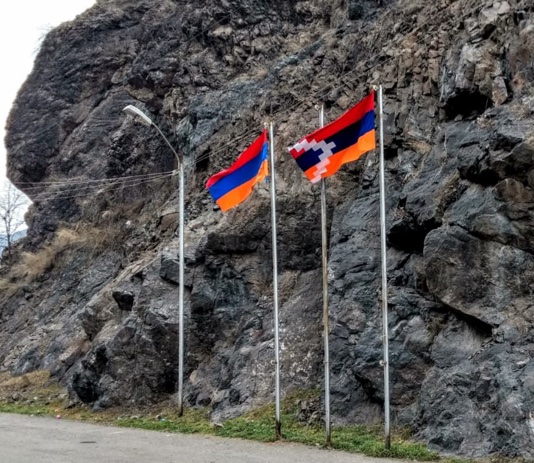by Silvia Boltuc and Giuliano Bifolchi * –
The recent military operation conducted by Azerbaijan against the defense forces of the self-determined Republic of Nagorno-Karabakh/Artsakh is a strong signal of the instability of the South Caucasus region and translates as a wake-up call for regional and international actors to due to the possible risk of the outbreak of a new conflict along the lines of what happened in September 2020.
On September 19, 2023, Azerbaijan began an “anti-terrorism operation” in the territory of Nagorno-Karabakh to restore constitutional order. Baku’s Defense Ministry reported that Azerbaijani military forces used “high-precision weapons” against Armenian army positions and its military facilities.
Baku justified this military operation by accusing Yerevan of not only having armed forces on site, but also systematically shelling Azerbaijani military positions, undermining Azerbaijani national territories, working on engineering improvements to combat positions, as well as increasing the number of trenches and shelters in recent months.
Sergey Ghazaryan, Foreign Minister of the self-proclaimed Republic of Nagorno-Karabakh/Artsakh, commented on the incident, highlighting how recently Baku has carried out daily transfers of troops and has accumulated various weapons, also giving rise to a series of information and propaganda activities preparing the ground for large-scale aggression against Nagorno-Karabakh.
Ghazaryan pointed out that in the last 24 hours the Baku government has spread false information claiming that the Stepanakert government had allegedly carried out sabotage operations and fired at Azerbaijani military positions. From him Nikol Pashinyan, Prime Minister of Armenia, denied the Azerbaijani accusations relating to the presence of Armenian armed forces in the territory of Nagorno-Karabkah.
On his Telegram channel Ruben Vardanyan, former prime minister of the Republic of Artsakh, recorded a video declaring that “Azerbaijan has started a war to exterminate the Armenians in Nagorno-Karabakh”.
This Azerbaijani military operation follows a small positive outcome that occurred just yesterday. Indeed, after months of Azerbaijani blockade of the Lachin corridor, on September 18, 2023 the International Committee of the Red Cross transported 28 tons of humanitarian aid, including wheat flour, medical supplies and hygiene items, to Nagorno-Karabakh via the Akna Road (Agdam) – Stepanakert.
This humanitarian mission was the result of extensive discussions involving the International Committee of the Red Cross, the command of the Russian peacekeeping forces in Artsakh and international mediators and was undertaken in response to the very serious humanitarian situation caused by the complete blockade imposed by Azerbaijan .
If we analyze the regional geopolitical scenario we must remember that since December 2022 Nagorno-Karabakh has been isolated due to the blockade imposed by the Baku authorities in the Lachin corridor, the only connection route that connects Armenia to the territory of Artsakh.
Starting as a protest by Azerbaijani environmentalists, the Baku government subsequently not only imposed a military blockade but cut off natural gas supplies during the winter. For more than 10 months, therefore, the Armenian population of Nagorno-Karabakh has been facing a humanitarian crisis caused by the lack of essential products and services which has seen a sort of immobility on the part of the international community.
The anti-terrorism operation launched by the Azerbaijani armed forces not only confirms Baku’s planning and therefore gives even more credence to the recent news regarding the accumulation of weapons and soldiers by Azerbaijan on the borders with Nagorno-Karabakh . Furthermore, what Baku has done highlights the Azerbaijani modus operandi of now resorting to the use of military force instead of diplomatic dialogue.
Already in the 2020 Nagorno-Karabakh conflict, the Azerbaijani government had preferred weapons to the peace process led by the OSCE Minsk Group. With the military aggression against Armenia in September 2022 and the recent military operation against Stepanakert, it is clear that the Azerbaijani strategy hinges more on military force than diplomacy, going against the principles established by the European Union itself than in the years has become a fundamental strategic and commercial partner for Azerbaijan.
Even if both parties accuse each other of violating agreements and borders and it is always difficult to understand who is right, it should be noted that the blockade of the Lachin corridor and this military operation risk further aggravating an already complex and delicate situation that the Armenian population of Nagorno-Karabakh is experiencing.
It is interesting to see how Baku’s military offensive takes place in the days in which Armenia is conducting military exercises with the United States on its territory, a decision taken by Yerevan after criticism from Armenian Prime Minister Nikol Pashinyan on the Russian failure to manage the situation in the Lachin corridor as best as possible.
It is therefore necessary to ask ourselves whether the international community will act against Baku or whether geopolitical interests prevail in this case too: in fact, Azerbaijani natural gas is fundamental for the European Union to guarantee energy security in such a difficult moment due to sanctions European countries to Russia, just as Azerbaijani territory represents a strategic area for Washington in the Caucasus-Caspian Sea macroregion.
So will Brussels and Washington, after the many promises made in Yerevan, stand by and watch this time too, or will they decide to intervene at the risk of ruining relations with Baku and its “brother” ally Ankara? Or, even in this case, will Yerevan ultimately have to turn to Moscow even after Prime Minister Pashinyan’s strong words of accusation towards the Kremlin?
While the various strategies are being outlined and attempts are being made to answer these questions, the Stepanakert authorities declare that the Azerbaijani offensive has already caused two victims and the wounding of 11 people, including 8 children, demonstrating of how dangerous the situation is in the region.
* Article in mediapartnership with SpecialEurasia.


